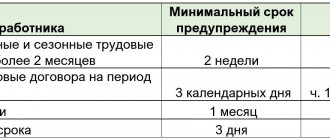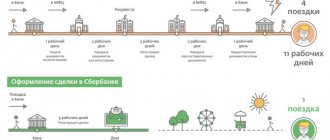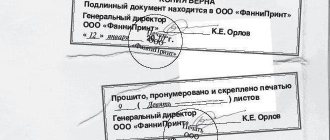QUALIFICATION OF ELECTRONIC CORRESPONDENCE
Electronic messages and electronic documents are transmitted through various communication channels, mainly via the Internet. Participants in civil transactions actively use electronic correspondence to confirm significant legal facts. We are talking about electronic messages and documents created and transmitted by email using:
- cloud platforms;
- online services created for collaboration and video conferencing;
- messenger programs used for personal correspondence or corporate chats.
This is evidenced by the number of legal proceedings in which parties rely on emails and messages.
Because business involves many risks, any electronic communication transmitted should be considered potential evidence. This means that the creation, transmission and storage of information electronically must identify the parties and their legal relationships.
It should be noted that messages transmitted using the Internet are “non-traditional” evidence and are assessed by the courts in their entirety and in relation to other evidence.
Any information obtained using the Internet and presented on paper (screenshots of pages, printouts of various databases, printouts of electronic documents, etc.) is added by the courts to the case file as written evidence.
It is important that the information reflected in electronic messages is accessible to human perception and is relevant to the case.
Like any evidence, electronic communications must meet the criteria of admissibility and relevance. How does this manifest itself in practice? It is necessary to confirm the involvement of the parties in the created and sent messages (a sign of admissibility), and also to make sure that the content and meaning of the message make it possible to establish disputed facts (a sign of relevance).
Correspondence that does not allow us to establish any circumstances significant to the case is not considered adequate evidence:
- phone numbers from which they were sent;
- email addresses from which the disputed correspondence took place;
- account in instant messengers/cloud platforms;
- their belonging to the plaintiff and defendant;
- the relevance of messages to the disputed relations of the parties (Articles 65, 67, 71 of the Arbitration Procedure Code of the Russian Federation).
Is it necessary to notify the second party about the notarization?
Practice shows that services store user contacts for a long time and allow them to be changed at any time. The notary has the right not to warn the second interlocutor about his actions, as this will lead to the loss of information due to the possibility of deleting messages.
In such a situation, it will be almost impossible to prove the fact of an offense in court. In rare cases, a forensic examination of the mailbox is ordered to identify missing fragments.
CRITERIA FOR ACCEPTANCE OF ELECTRONIC CORRESPONDENCE
For the purposes of documenting legal relations between the parties, the legal significance of electronic messages must be established by agreement.
The ability to use email, instant messengers and/or cloud platforms must be provided for in the contract. If this is not stated, the court may not accept electronic correspondence as evidence. The court will not be able to reliably establish that the message comes specifically from the counterparty, especially in cases where:
- there is no unconditional evidence that the email address, messenger account, or telephone number belongs to the counterparty;
- the fact of conducting the submitted electronic correspondence is not confirmed during the trial.
The use of electronic messages to send legally significant messages in violation of another method specified in the contract is not permitted.
DIFFICULTIES IN IDENTIFYING THE PARTIES AND THEIR OVERCOMING
The display of any information, for example, on the screen of a smartphone, does not have evidence of evidence. To do this, the email must contain objective information about the sender of the message:
- last name, first name, patronymic of the subscriber;
- subscriber's telephone number and/or username in the messenger program.
Electronic messages must contain a mandatory feature: the sender and recipient must be identified. The court will only accept evidence that can reliably establish that the messages came from the proper party. To do this, for example, the court, at the request of a person participating in the case, may request from the cellular operator information about the owner of the disputed telephone number.
To minimize the risk of electronic correspondence being recognized as inadmissible evidence, the contract must define:
- type of communication (email, messenger program, cloud service (platform), etc.);
- email addresses of the parties;
- matters that may be agreed upon using such means of communication;
- authorized persons and their positions.
Otherwise, the court may reject such correspondence on the grounds of inadmissibility, since the court will not be able to identify the senders and recipients of messages, as well as compare such messages with the legal relations of the parties.
Evidence in the form of electronic correspondence will not be accepted by the court if the following circumstances are established:
- the parties have not entered into an agreement on the exchange of electronic documents;
- the parties used the email addresses of other persons who were not parties to the agreement and were not authorized to take appropriate actions;
- the parties used email addresses different from the official details of the party to the agreement (the company as a legal entity).
When agreeing in a contract on the conditions for using a certain method of communication, for example, an online service for exchanging legally significant documents, the parties must use the specified procedure for interaction.
If a certain method of transmitting electronic messages does not allow the parties to the contract to fully exercise their rights, the interested party is not deprived of the opportunity to declare this during the execution of the contract or, in the manner prescribed by law, to declare the invalidity of certain terms of the contract.
Keep in mind that the absence in the contract of an indication of the possibility of exchanging legally significant messages between the parties via telephone or mobile applications in the absence of objections from the party to the dispute regarding the belonging of this correspondence to authorized representatives of organizations does not indicate that this type of evidence is devoid of evidential value.
Correspondence between the parties to the agreement, including those executed using electronic services, will be able to take into account clauses. 3, 4 tbsp. 1 of the Civil Code of the Russian Federation to testify to the conscientious behavior of a party to the case, repeatedly notifying the other party about legally significant events relating to the execution of the contract. The contract may not provide for the possibility of exchanging electronic messages, but courts may recognize the sending of electronic messages, for example letters via e-mail, as consistent with business customs and not contrary to the civil legislation of the Russian Federation if the parties exchange information at the specified address within the framework of existing legal relations. In this case, the ownership of the email address by the party to the contract must be indisputable.
The recognition of electronic correspondence by the parties to the dispute is of no small importance. If the parties do not dispute the existence of electronic correspondence and recognize its content as reliable, then the court takes it into account as the direction of legally significant messages.
If you decide to use correspondence as evidence of the creation, modification or termination of a contractual relationship, performance or violation of any obligations, you must take into account at least two circumstances:
- possibility of notarization of correspondence
- relevance of this evidence to the subject of the dispute
Let us leave aside the admissibility of other methods of recording correspondence for now. We'll deal with this later.
Part 2 of Article 434 of the Civil Code of the Russian Federation defines that an electronic document transmitted via communication channels that allows one to reliably establish that the document comes from a party to the contract is recognized as information prepared, sent, received or stored using electronic, magnetic, optical or similar means, including electronic information exchange and e-mail.
However, more often than not, courts do not accept simple printouts of emails as appropriate evidence on their own initiative or on the initiative of the other party to the dispute.
For example, in arbitration case No. A14-3679/2014, the Claimant presented as evidence of the filing of a claim in relation to work performed under a contract, a copy of the letter printed from an email, a DVD-RW digital disc with a saved email, a color image of a print screen with an image of an open email, as well as the letter itself from the Defendant in .pdf format in color. In response, the Defendant stated that the Plaintiff falsified this evidence. The plaintiff objected to the exclusion of the relevant letter from evidence, in support of which he had to notarize the electronic correspondence, including the attachment.
The defendant tried to object to the legality of the certification of the correspondence, citing the presence, in his opinion, of procedural violations in the preparation of the notarial protocol, which resulted in the certification of the correspondence after the court accepted the case for consideration. However, this argument was rejected by the court due to the following:
By virtue of Article 102 of the Fundamentals of the legislation of the Russian Federation on notaries, approved. RF Armed Forces 11.02.1993 No. 4462-1, at the request of interested parties, the notary provides the evidence necessary in the event of a case arising in court or an administrative body, if there are grounds to believe that the presentation of evidence will subsequently become impossible or difficult.
At the same time, part two of Article 102 of the Fundamentals, which establishes that a notary does not provide evidence in a case that, at the time interested parties contact the notary, is being processed by a court or administrative body, has lost force since January 1, 2015 (Federal Law of December 29, 2014 No. 457 -FZ “On Amendments to Certain Legislative Acts of the Russian Federation”).
Important aspects of e-mail certification that a practicing lawyer needs to know
If you use an email client (Microsoft Outlook, Mailbird, eM Client, Claws Mail, Zimbra Desktop, TouchMail, Thunderbird, The Bat!, etc.), configure mail collection so that your emails are not deleted from the mail server and you always have access to them remote access via web interface.
Local storage of emails on your computer or mobile device will significantly complicate the ability to certify such correspondence, since such correspondence is no longer information on the Internet.
You may be able to have such correspondence certified by a notary, but more likely as part of an inspection of material evidence (laptop or mobile device), and therefore with mandatory notification of the place and time of this notarial act of your opponent in the dispute, since, unlike the information posted on the Internet, certification of such evidence does not apply to urgent cases. Without a doubt it is more difficult, longer and more expensive.
When certifying correspondence, it is possible to save and certify attached files on both paper and electronic media. It is advisable to record and certify large files or files on electronic media in a format that requires special software that is not available to the notary (for example, files *.dws, *.dwt, *.dxf - autoCAD program, *.cdr - Corel Draw program, etc. .P.)
Many email services in their user interfaces use abbreviated names of the recipient and sender of letters, names in the form of a user login, or names specified by the users themselves, while the email addresses are hidden. In this case, when recording (certifying) correspondence, we recommend that you pay attention to the notary and additionally inspect pop-up windows (or other interface elements) with additional information about the recipient/sender, containing the email addresses of the participants in the correspondence.
Otherwise, it may be necessary to collect additional evidence to confirm the relevance of this correspondence to the subject and participants of the dispute, since quite often the login or user name does not correspond to the real user name.
It should be understood that in the course of providing evidence, the notary does not conduct research or examination, does not draw any conclusions, does not establish or identify participants in the correspondence.
As for identifying the sender and recipient of an email message, in the absence of an electronic digital signature of the corresponding participant in the correspondence, the technical possibility of directly identifying the user is impossible, since the mail services themselves do not identify the owners of electronic mailboxes.
At the same time, identification of the sender and recipient is possible outside of the notarial act, for example, by sending a lawyer or court request to the person administering the mail service about the IP address (addresses) used by the user or the telephone number of the user who registered the electronic mailbox, if When registering an email, a verification procedure took place to verify the telephone number of such a user.
Circumstances that will help facilitate the identification of a participant in electronic correspondence and resolve the issue of its relevance to an ongoing or potential dispute:
- indication of the electronic mail address in the agreement concluded between the parties
- indication of the email address by the person himself in the documents submitted to the materials of this or another case
- existence of previous correspondence between the parties at the same addresses
- indication of the electronic postal address of the party to correspondence on his website, business cards, letterheads, and other documents emanating from this person
- indication of email in various directories, help systems and advertising, including those posted on the Internet
- indication of email as contact information on official government resources (trading platforms, Unified State Register of Legal Entities, ROSPATENT Registers)
- conducting business correspondence from the same email account with other persons
Circumstances to be assessed to determine whether or not the correspondent has the authority to exchange legally binding communications:
- an indication of the relevant powers of the person in the documents signed by the parties (agreement or additional agreements thereto)
- the presence of previous correspondence not disputed by the parties on similar issues, indicating the established business practice between the parties in resolving contractual issues through the exchange of electronic messages
- indication of the position or corresponding powers of the person in the correspondence itself
- inserting into the correspondence documents that give reason to believe that the person who sent them has the necessary authority (scans of documents with the details of the counterparty, scans of the agreement or appendices to it, signed by an authorized person, or other documents coming from an authorized person or containing information that is available to in normal civil transactions, only an authorized person has the opportunity) Agreements and annexes to them, letters, reconciliation statements, balance sheets, tax reporting, constituent or other internal documents of a person, payment orders, invoices, invoices, etc.
Depending on the subject of the dispute and the specific circumstances, establishing reciprocity of electronic correspondence may be important to victory. The reciprocity of correspondence can be confirmed by examining the service headers of an email, where, for example, with a high degree of certainty, a technically justified conclusion can be made that the letter being studied is a response to a previously received letter.
@Daddy_Lawyer
CRITERIA FOR THE RELEVANCE OF ELECTRONIC CORRESPONDENCE
The relevance of correspondence can be assessed according to several criteria. Thus, sent electronic messages must convey the actual will of the parties. However, the content of the correspondence should not be ambiguous. Its content must clearly indicate the party's intention to exercise its rights in one way or another.
The exchange of certain abrupt and not always clear in meaning messages to an outsider, which the court cannot correlate with the position of the party in the case, is not taken into account.
The email must contain specific information:
- date, time;
- name of counterparties;
- information regarding the circumstances of the legal dispute.
If the case materials do not contain evidence of the actual execution of the loan agreement, the court will not accept correspondence by email and/or instant messengers as evidence of the conclusion of the loan agreement and the reality of the transfer of funds.
The form of performing a legally significant action is also taken into account by the courts. For example, termination of a written contract by exchanging electronic documents or transferring the result of work (sending a project by e-mail) without consent expressed by signing one or more related documents can be assessed by the court only as an intention to terminate the contract or interaction under the contract, but does not mean recognition of the legal fact.








